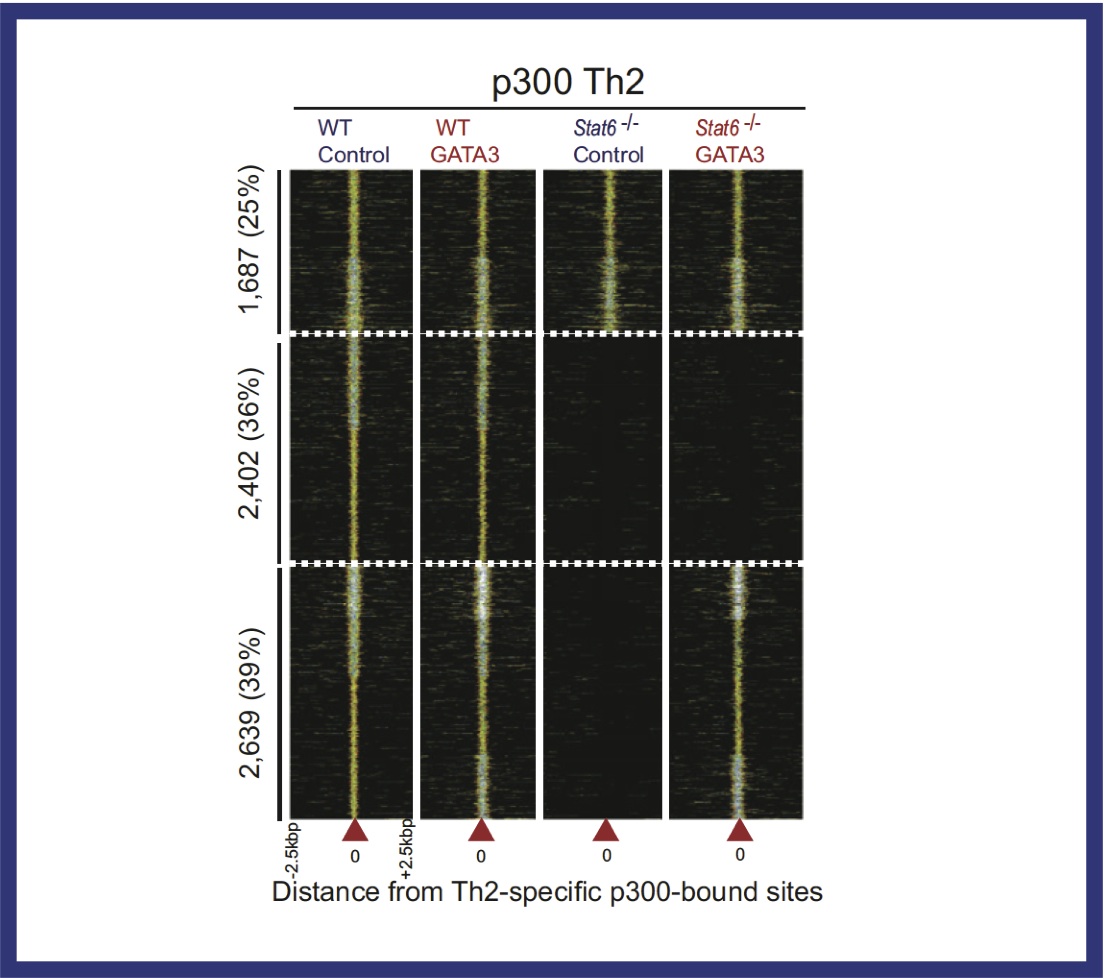Understanding the Biology of Genome in Immune Cells
 |
A fundamental property of adaptive immune cells is their ability to elicit a transcriptional response to an immense array of microbial pathogens. Immunologists typically characterize these specialized cells through the differential expression of cytokine genes. However, a growing body of evidence supports a model in which immune cells extensively utilize unique parts of the genome for shaping their response. Cells from a distinct ontogeny and differentiation stage employ a particular set of 'instructions’ to achieve a given transcriptional response. These instructions are referred as regulatory elements or enhancers and are genomic regions located outside protein-coding genes. It has become clear that even cells of the same ontogeny located in distinct tissues would acquire similar transcriptional outcomes but utilize vastly distinct enhancer elements. Despite what we have learned about the differential usage of enhancers in immune cells, it is unclear how these regulatory elements are marked and instructed to be used in a manner that reflects the cell's (a) ontogeny, (b) tissue environment, and (c) extracellular cues. The collaborative and hierarchical binding of transcription factors have been linked to the formation of enhancer repertoire in immune cells. A class of transcription factors known as pioneer factors prepares the genome and primes enhancers for their future activation. Others known signal-dependent transcription factors work on a particular subset of regulatory elements from the large repertoire of potential enhancers and prepare these elements for activation. Through the integration of many layers of genomic information and development of novel computational methods, our lab is interested in (a) delineating transcription factors with hierarchical impacts on enhancer selection, (b) profiling partners of such transcription factors, and (c) studying how these proteins shape the enhancer repertoire of various immune cells (Image in this page from Vahedi, et al, Cell, 2012. Image in previous page adopted from illustration in Science Magazine, previously adapted by Lauran Soloman). |
Relevant Publications
Vahedi, G., Kanno, Y., Sartorelli, V., O'Shea, J. J., “Transcription factors and CD4 T cells seeking identity: masters, minions, setters and spikers”, Immunology, 139(3): 294-8, 2013.
Vahedi, G., C. Poholek A, Hand, T. W., Laurence, A., Kanno, Y., O'Shea, J. J., Hirahara, K., “Helper T-cell identity and evolution of differential transcriptomes and epigenomes”, Immunol Rev, 252(1): 24-40, 2013.
Vahedi, G., Takahashi, H., Nakayamada, S., Sun, H. W., Sartorelli, V., Kanno, Y., O'Shea, J. J., “STATs shape the active enhancer landscape of T cell populations”. Cell, 151(5): 981-93, 2012.
Wei*, L., Vahedi*, G., Sun, H. W., Watford, W. T., Takatori, H., Ramos, H. L., Takahashi, H., Liang, J., Gutierrez-Cruz, G., Zang, C., Peng, W., O'Shea, J. J., Kanno, Y., “Discrete roles of STAT4 and STAT6 transcription factors in tuning epigenetic modifications and transcription during T helper cell differentiation”, Immunity, 32(6): 840-51, 2010 Notes: *equal contributing authors.